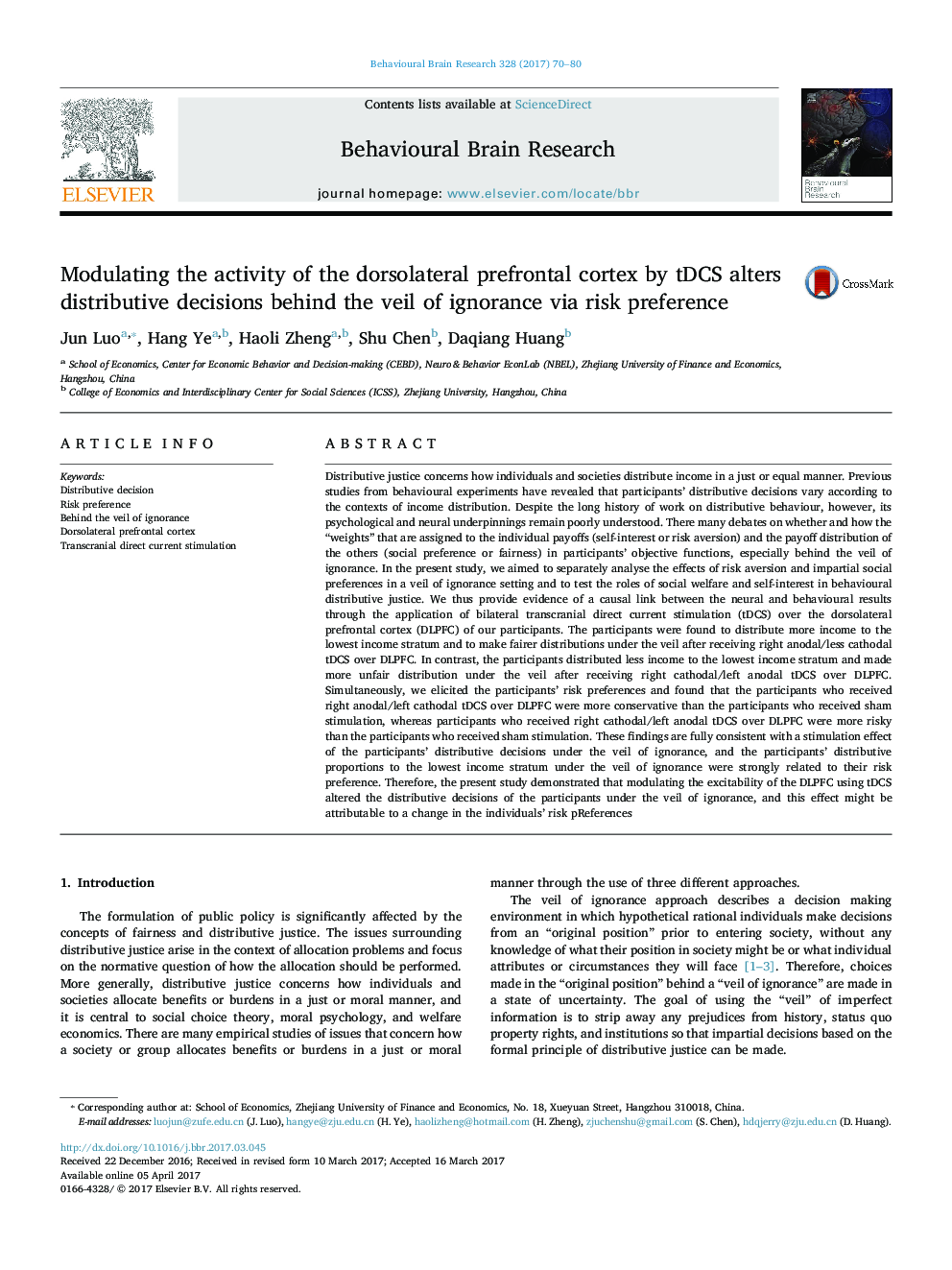| کد مقاله | کد نشریه | سال انتشار | مقاله انگلیسی | نسخه تمام متن |
|---|---|---|---|---|
| 5735153 | 1612907 | 2017 | 11 صفحه PDF | دانلود رایگان |

Distributive justice concerns how individuals and societies distribute income in a just or equal manner. Previous studies from behavioural experiments have revealed that participants' distributive decisions vary according to the contexts of income distribution. Despite the long history of work on distributive behaviour, however, its psychological and neural underpinnings remain poorly understood. There many debates on whether and how the “weights” that are assigned to the individual payoffs (self-interest or risk aversion) and the payoff distribution of the others (social preference or fairness) in participants' objective functions, especially behind the veil of ignorance. In the present study, we aimed to separately analyse the effects of risk aversion and impartial social preferences in a veil of ignorance setting and to test the roles of social welfare and self-interest in behavioural distributive justice. We thus provide evidence of a causal link between the neural and behavioural results through the application of bilateral transcranial direct current stimulation (tDCS) over the dorsolateral prefrontal cortex (DLPFC) of our participants. The participants were found to distribute more income to the lowest income stratum and to make fairer distributions under the veil after receiving right anodal/less cathodal tDCS over DLPFC. In contrast, the participants distributed less income to the lowest income stratum and made more unfair distribution under the veil after receiving right cathodal/left anodal tDCS over DLPFC. Simultaneously, we elicited the participants' risk preferences and found that the participants who received right anodal/left cathodal tDCS over DLPFC were more conservative than the participants who received sham stimulation, whereas participants who received right cathodal/left anodal tDCS over DLPFC were more risky than the participants who received sham stimulation. These findings are fully consistent with a stimulation effect of the participants' distributive decisions under the veil of ignorance, and the participants' distributive proportions to the lowest income stratum under the veil of ignorance were strongly related to their risk preference. Therefore, the present study demonstrated that modulating the excitability of the DLPFC using tDCS altered the distributive decisions of the participants under the veil of ignorance, and this effect might be attributable to a change in the individuals' risk pReferences
Journal: Behavioural Brain Research - Volume 328, 15 June 2017, Pages 70-80